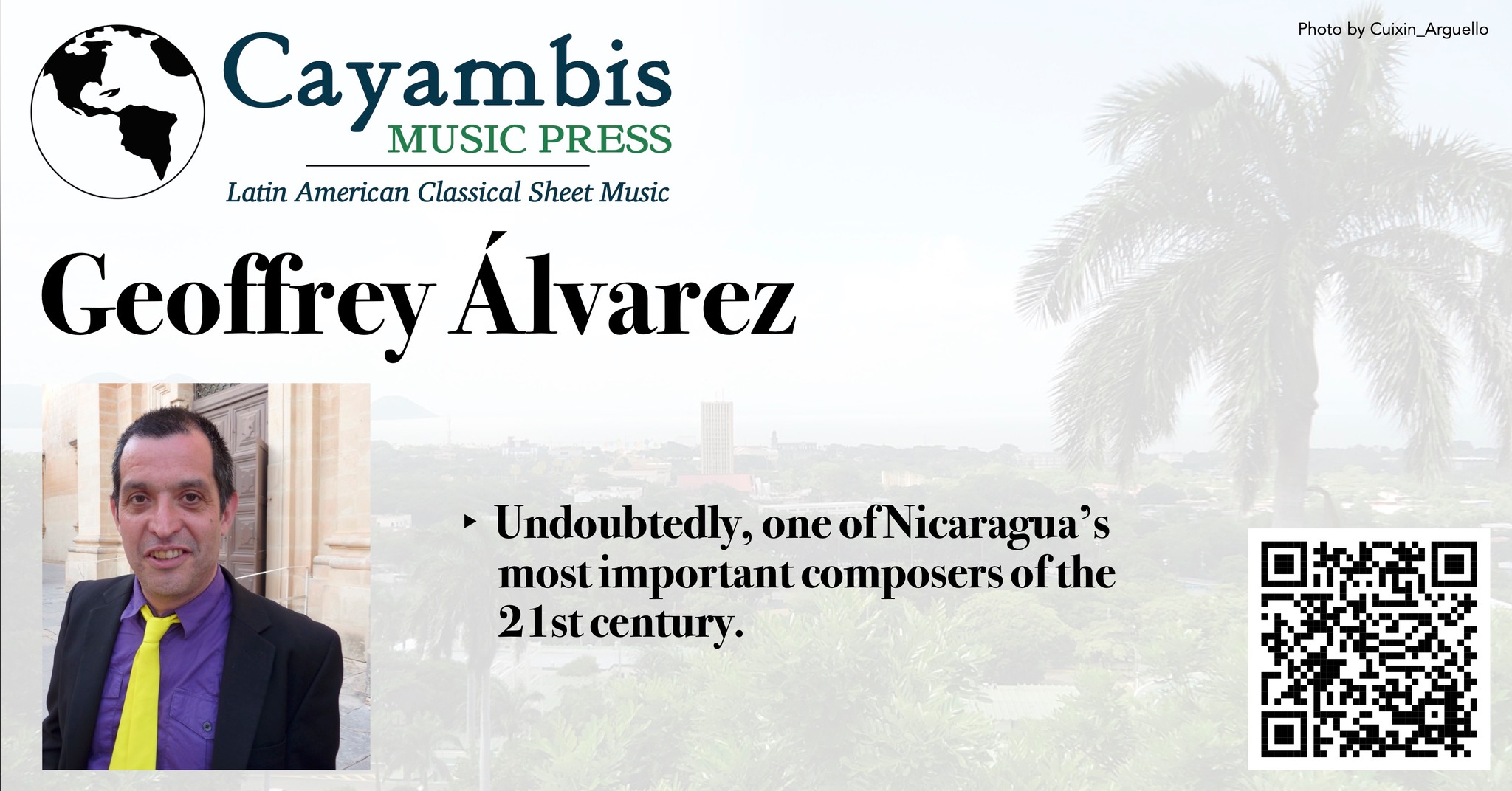
Geoffrey Álvarez:
chamber music
Piano Trio

This oneiric indulgence guided by the ebullient spirit of Fellini, is
centred on the Austrian Empress, Archduchess Maria Theresa (1717-1780). The
principle conceit is an impossible somatic experience of Beethoven’s
celebrated Opus 97 B flat major Piano Trio written for the Archduke Rudolf
(1788-1831) in 1811. As the Archduchess sinks into the arms of Morpheus, the
darkest B flat minor moment from the trio of Beethoven’s Trio is heard
slowed down and distorted, as might be expected from a somnolent recreation,
resulting in an anxious turgid miasma. The body of Erhozhogintraumtrio is a
fragmentary recollection of several themes from Beethoven’s work overlaid by
her anxieties of ruling the Hapsburg Empire – identification with
Montiverdi’s Poppea, (Montiverdi was born in Cremona, under Hapsburg rule
until 1859), regret for the loss of the rich Spanish heritage in 1700 and
her rejuvenation by the hot blooded spirit of Transylvania, at the opposite
end of her empire. The work ends as she awakes refreshed with suitably
energetic material, tonally a dominant in B flat major. Performance material
here:
Archduchess Trio - Download Sheet Music PDF file
(scoreexchange.com)
https://www.youtube.com/watch?v=T6NNrQiGsAY
Bassoon and Piano
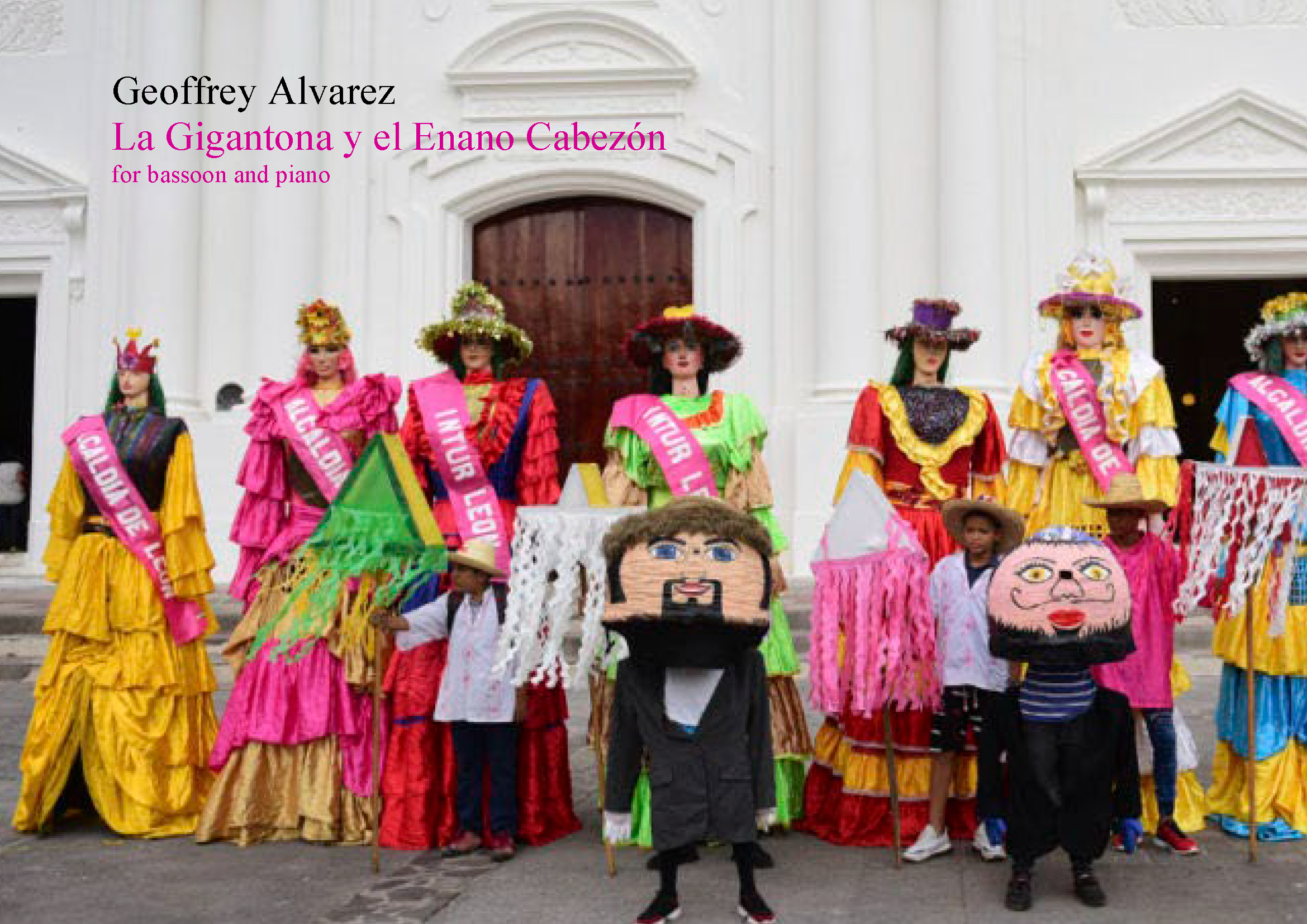
La gigantona y el
enano cabezon (youtube.com)
Based on Nicaraguan folk tunes celebrating La Gigantona -
available at
Cayambis Music Press:
Alvarez | La gigantona y el enano cabezon
La Gigantona, una tradición que lleva humor y picardía a las calles de Nicaragua - Infobae
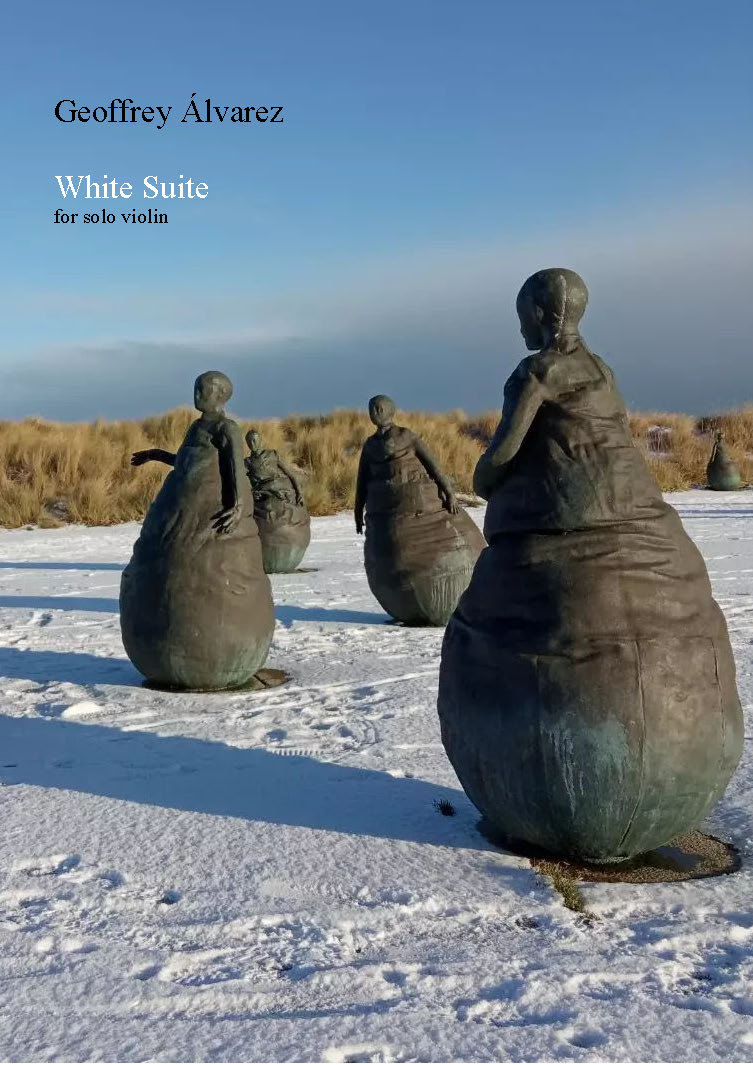
1: Old Lace
2: Rice Pudding
Passacaglia
3: The Judderman
4: Ice Rink
White
Suite - Download Sheet Music PDF file (scoreexchange.com)
White Suite
(youtube.com)
The cover photograph is by Phillip Costen.
The sculptures are
‘Conversation
Piece’ by Muñoz in South Shields.
Accordion
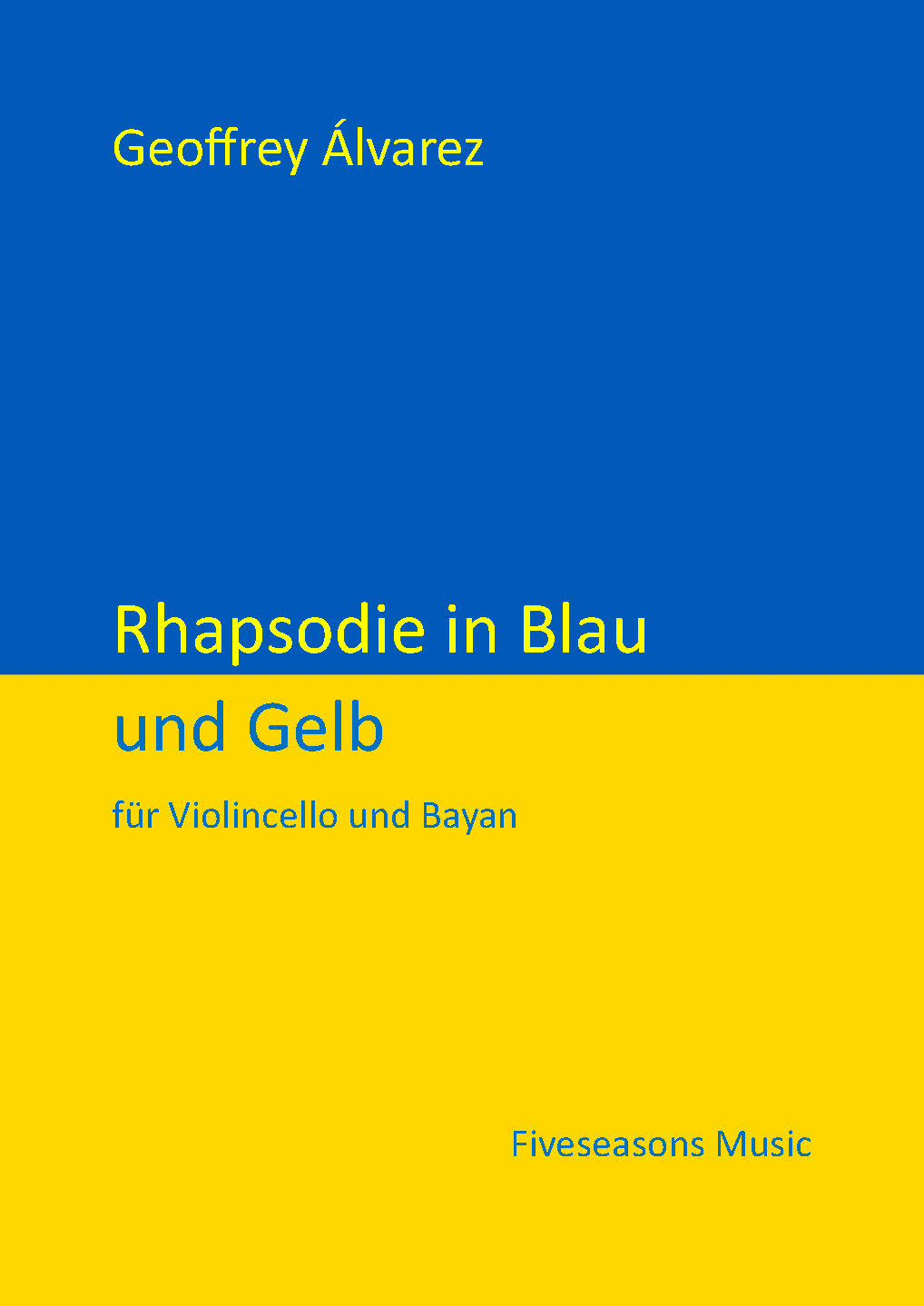
A rhapsody on Ukrainian folk melodies for virtouso Bayan (Russian accordion)
player Tatjana Bulava.
http://www.tabutbstudio.com/
Rhapsodie in Blau und
Gelb (youtube.com)
https://www.scoreexchange.com/scores/rhapsodie-in-blau-und-gelb-625180.html
There are two other works containing
accordion parts listed at the bottom of this webpage.
Solo Oboe

Alvarez | Stormy Daniel (cayambismusicpress.com)
In 1985 an Oboe Concerto was completed and performed at St John’s Smith Square,
London with the soloist Nicholas Daniel conducted by the composer.
The association with this virtuoso was resumed with the emergence of Stormy Daniels
in 2018, her name suggesting a
turbulent wind piece for the oboist with a similar name expressed in an
atonal idiom redolent of Varèse which resurfaces in later orchestral works
by Álvarez such as ‘The brassic Fish Lass.’- the second movment of ‘A
Sunderland Symphony’ (2023) halfway down
this webpage .
This work is built on three themes: theme one is characterized by widely
spaced accented figures and quintuple or sextuplet semiquaver flourishes
elaborating an arabesque. Theme two is largely built on a hieratic
triplet-crotchet motion with grace-notes accenting the snake-like writhing
of the melody, a repeated single-note figure characterized by transitions to
breathy notes at the end of each note, and an ascending multi-note
acciaccatura. Theme three is linked to theme two with the latter ornament
appearing with great frequency here and the introduction of a scooping motiv
of two short notes linked to rapidly rising or falling to a longer
concluding note and a single short note repeated once as a longer one. The
development section begins at m. 61 with a statement of the quintuplets of
the first theme, the listener alerted to this by a long, fairly high held
note with a crescendo, later confirmed by an even longer held note on an
even higher note. There is a brief recapitulation at m. 123, characterized
initially by a return to the low notes of the opening.
Bass Clarinet and Marimba
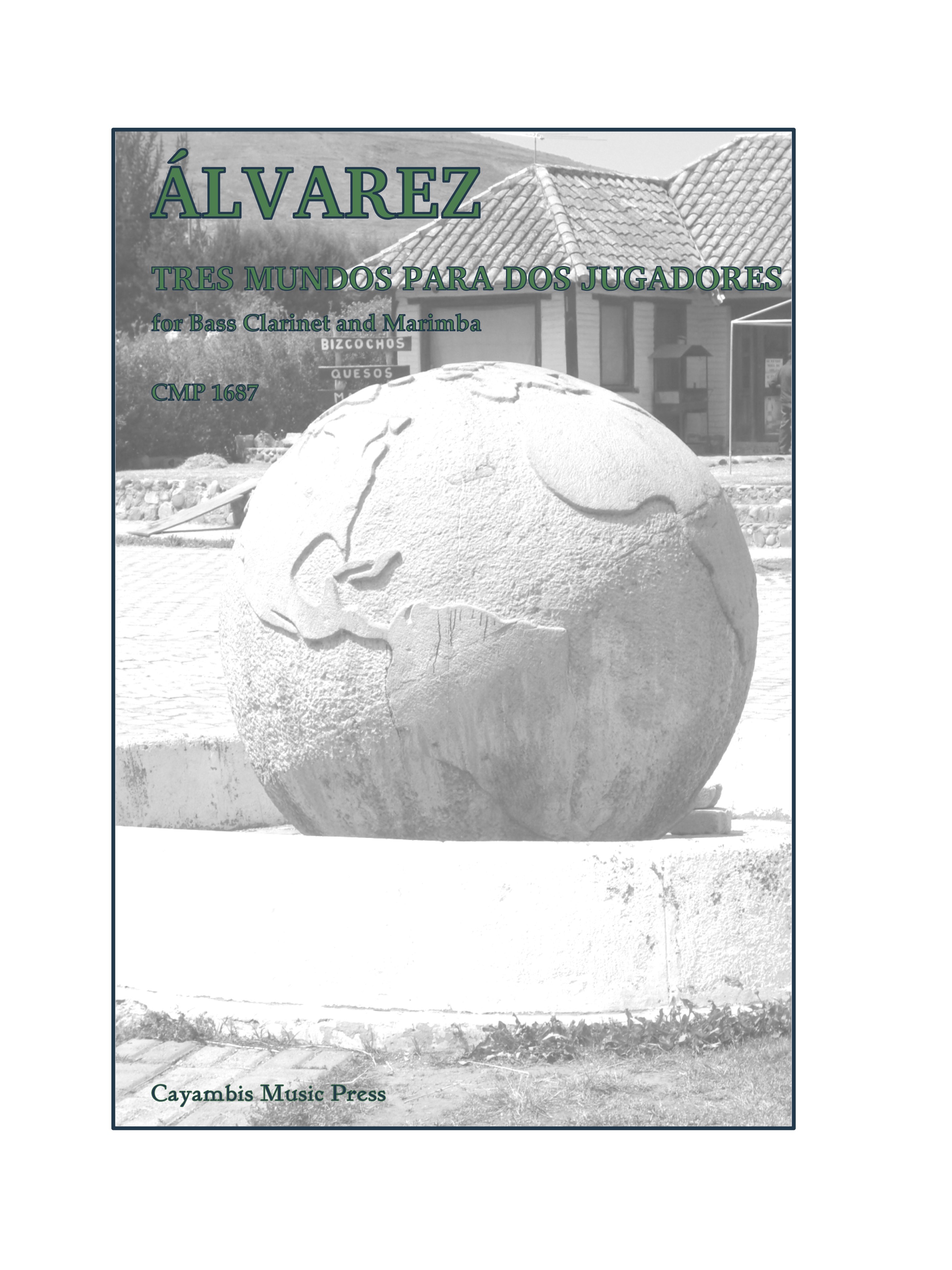
Tres mundos para
dos jugadores
for bass clarinet and marimba
duration
12′ 50″
written for the Dúo Antwerp
Alvarez | Tres mundos para dos jugadores (cayambismusicpress.com)
Piano Duet
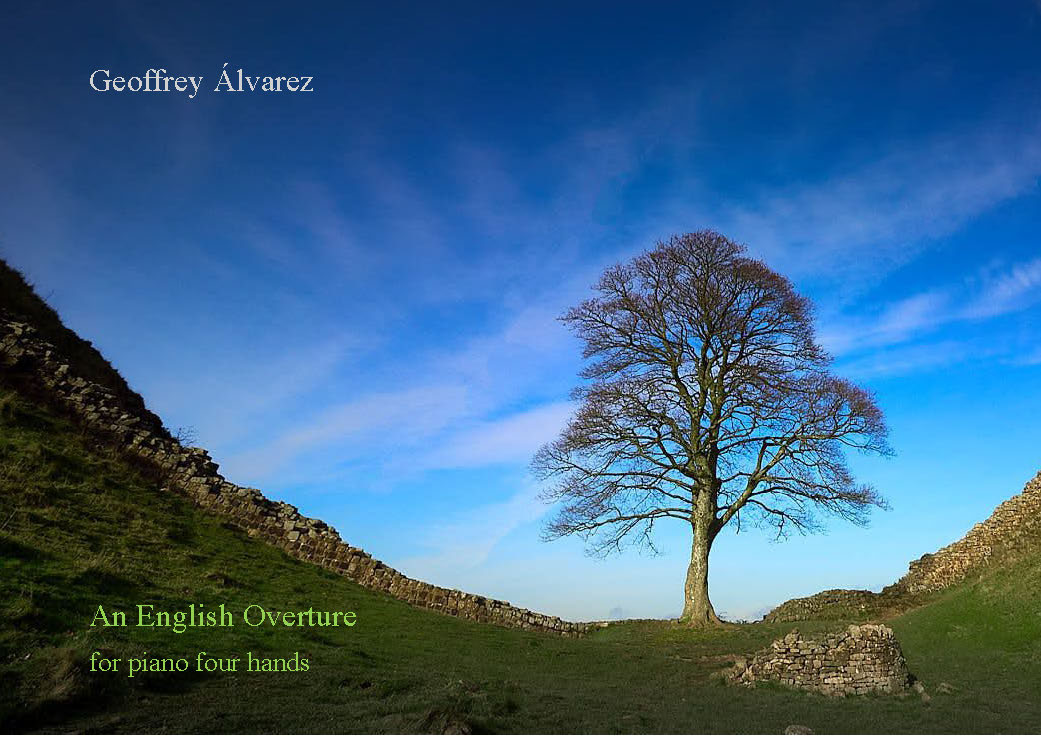
A short fantasia dedicated to the memory of Sycamore Gap,
based on the following English folk song:

An English Overture (piano duet version) - PDF
file (scoreexchange.com)
An English
Overture (youtube.com)
Viola and pianoforte
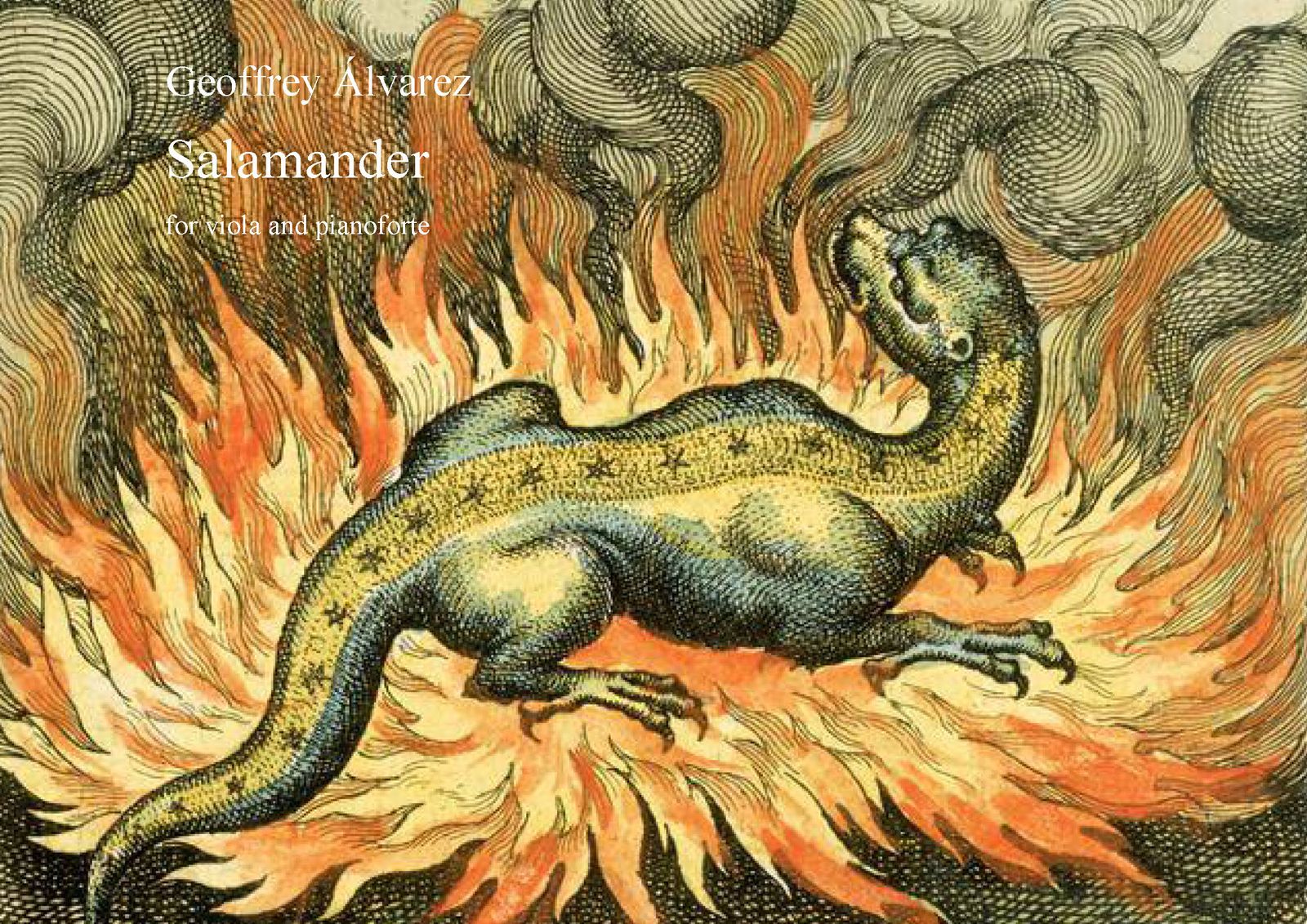
A Fantasia on fiery themes by Alexander Nikolayevich Scriabin.
Salamander - Download Sheet Music PDF file scoreexchange.com
https://www.youtube.com/watch?v=Jo_mFHBcKgY&feature=youtu.be

The Song of Songs
שִׁ֥יר הַשִּׁירִ֖ים - Download Sheet Music PDF
file (scoreexchange.com)
שִׁיר
הַשִּׁירִים (youtube.com)
The motivs from this set of variations are taken from two versions of the Song of Songs, (1) read in Hebrew with Ashkenazi Nigun by Rabbi Moshe Weisblum PhD transcribed by Geoffrey Álvarez
Song of Songs reading Hebrew Ashkenaz Rabbi Weisblum שיר השירים פסח נוסח
אשכנז (youtube.com)
and (2) from the transcription of the Yemenite version by Professor Eigatures Werner from Hebräische Musik-vol.20 of Das Musikwerk. Darmstadt, 1961.
The illustration shows „Das Hohenlied Salomos“ Nr.11 from the Bilderzyklus by the German Artist Egon Tschirch*22.
Juni 1889 Rostock, Germany). His heir Wolfgang Adler provided a permission to publish all his works under the licence Cc-y-sa-
3.0-de

sex carmina: linguis six - Download Music PDF file (scoreexchange.com)
sex
carmina (youtube.com)
This
collection of six songs by Geoffrey Álvarez was a response to Wolfgang Wölfer's request for something for the combination of instruments envisaged for this project and is a heterogenous ‘Ensalada’ in differing styles and languages, from the poetry of Victorian Englishman Ernest Dowson to a setting of an early French recipe for Bechamel sauce and a transcription of a folk song by the greatest living Maltese writer, Joseph Vella Bondin,featuring in the opera,
Dawk lifuq l-iġfna
jbaħħru
Piano Solo
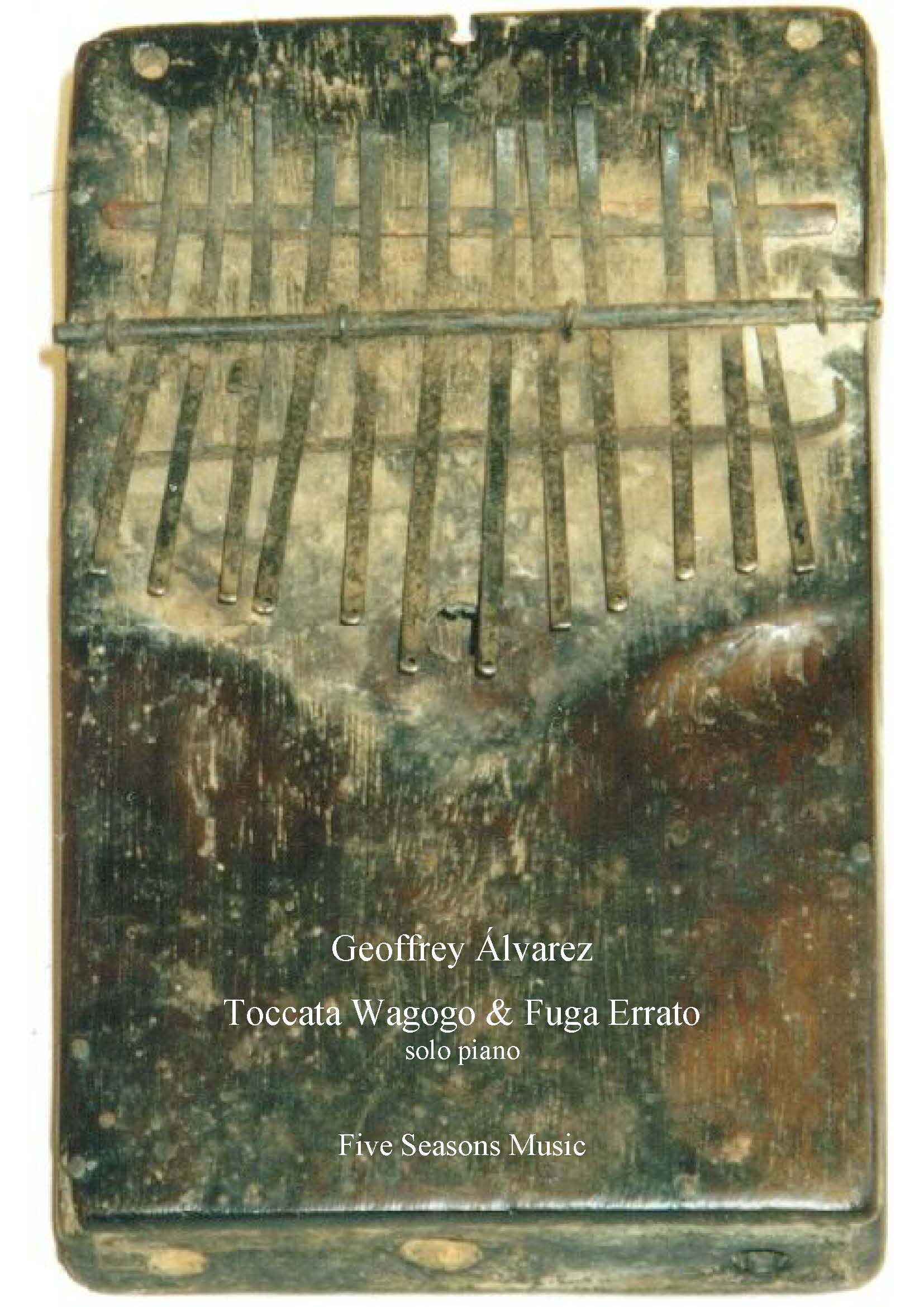
sample score
•
premiere by
Matthew Schellhorn
•
duration
13′ 17″
Premiered in the
10 x 10
Recital (alvarezchamberorchestra.com)
hosted by the Alvarez Chamber Orchestra and
Markson Pianos
The Cradle an the Mill
–
a
meditation
on two Galician folk songs
for solo piano
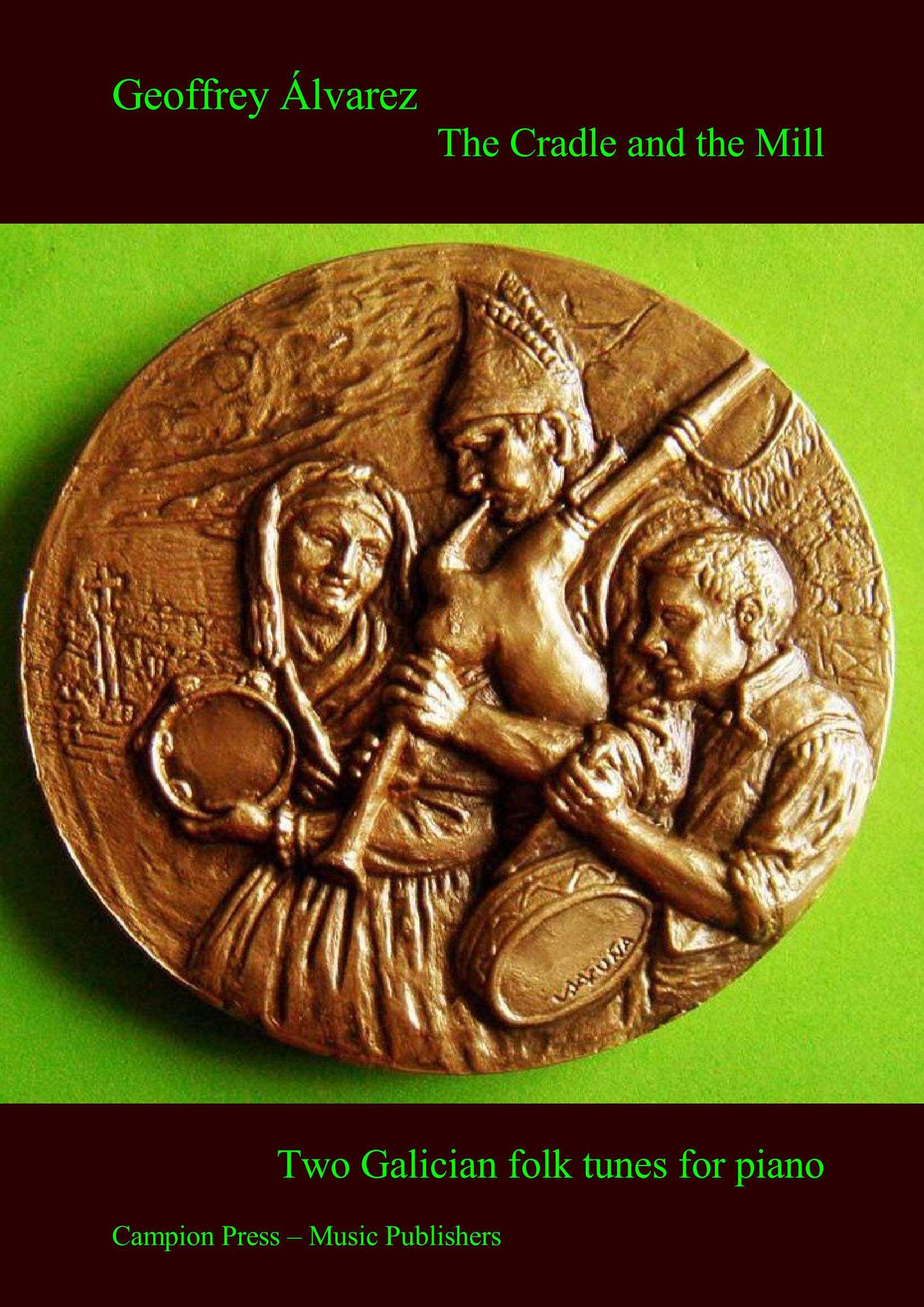
score
•
digital realisation
•
duration
“O neniño” y “Muiñeira” The Cradle and the Mill
“
O neniño” is based on a
traditional Galician lullaby,
a
“canción
de cuna” or
“arrorró”
seldom heard nowadays.
Text of original song
O neniñoo... que el ven o cocon, a comer os nenos que non dormen non.
O
neniñoo... e ten pai quen e, a virgin do Carmen e mais San Jose. Ooo, oo...
English Translation
Oh, little baby, The bogeyman is coming to eat up
the children if they don't go to sleep Oh little baby, who is your father?
The Virgin of Carmen and also Saint Joseph.
This version of the arrorró was sung by Manuela Lema Sánchez in
Corcubión, November 23, 1962, recorded by Alan Lomax.
“Muiñeira”
is a Mill dance.
version for
piano duet
String Quartets
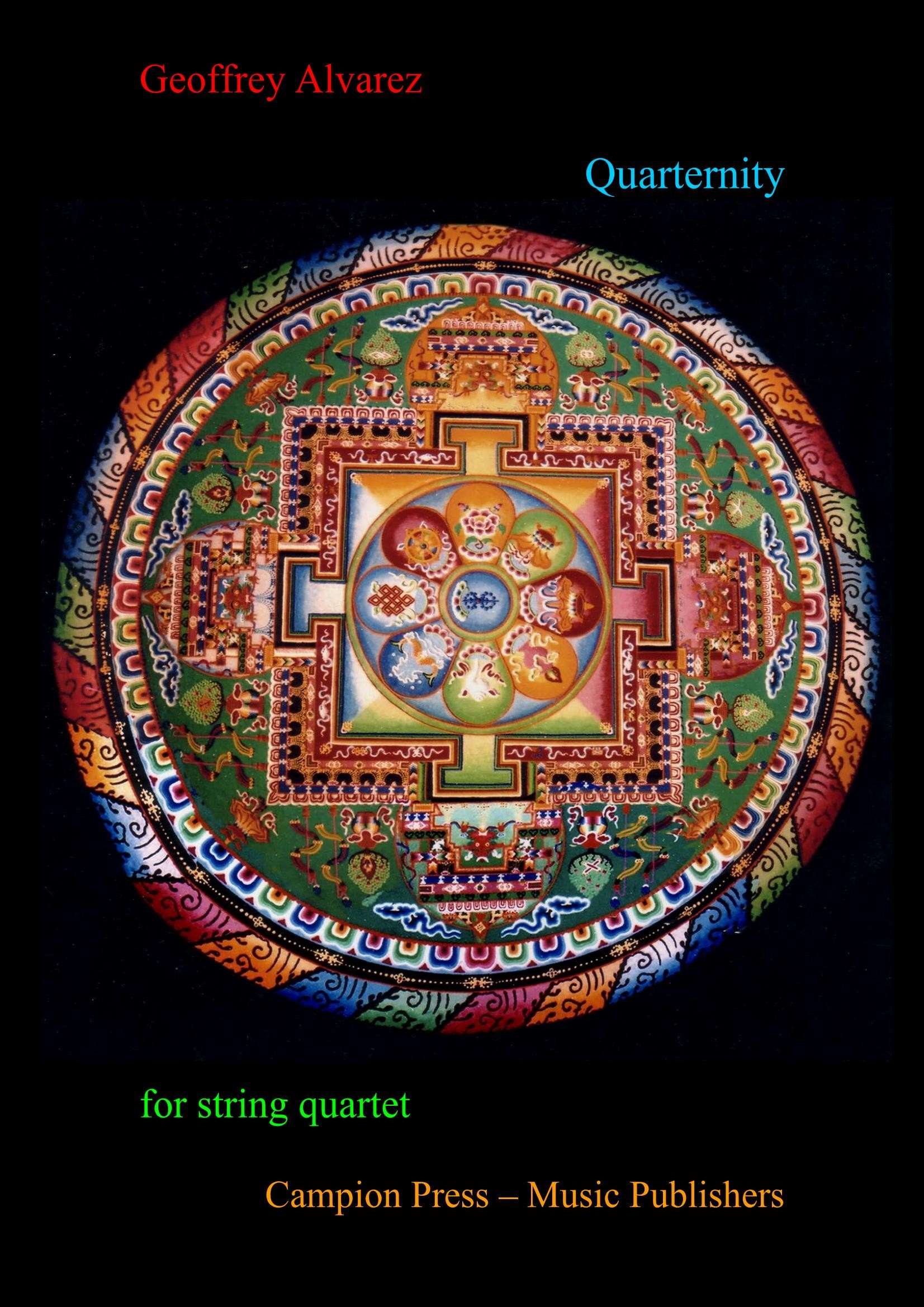
Quarternity
(youtube.com)
Quarternity - Download Music PDF file (scoreexchange.com)
This Quartettsatz is structured according to the Jungian concept of the
Quarternity. This archetype expands the traditional doctrine of the Trinity
by the addition of the feminine, the Virgin. He places the Virgin at one end
of a horizontal axis balancing the Holy Spirit at the other end. A vertical
axis with God at the top and Jesus at bottom completes the picture. The
instrumentation of the work reflects this structure: God is the viola, Jesus
the violoncello whilst the violins are the Virgin and the Holy Spirit. The
thematic working and pairing of instruments reflects the concept. ©
Copyright Geoffrey Alvarez 2015
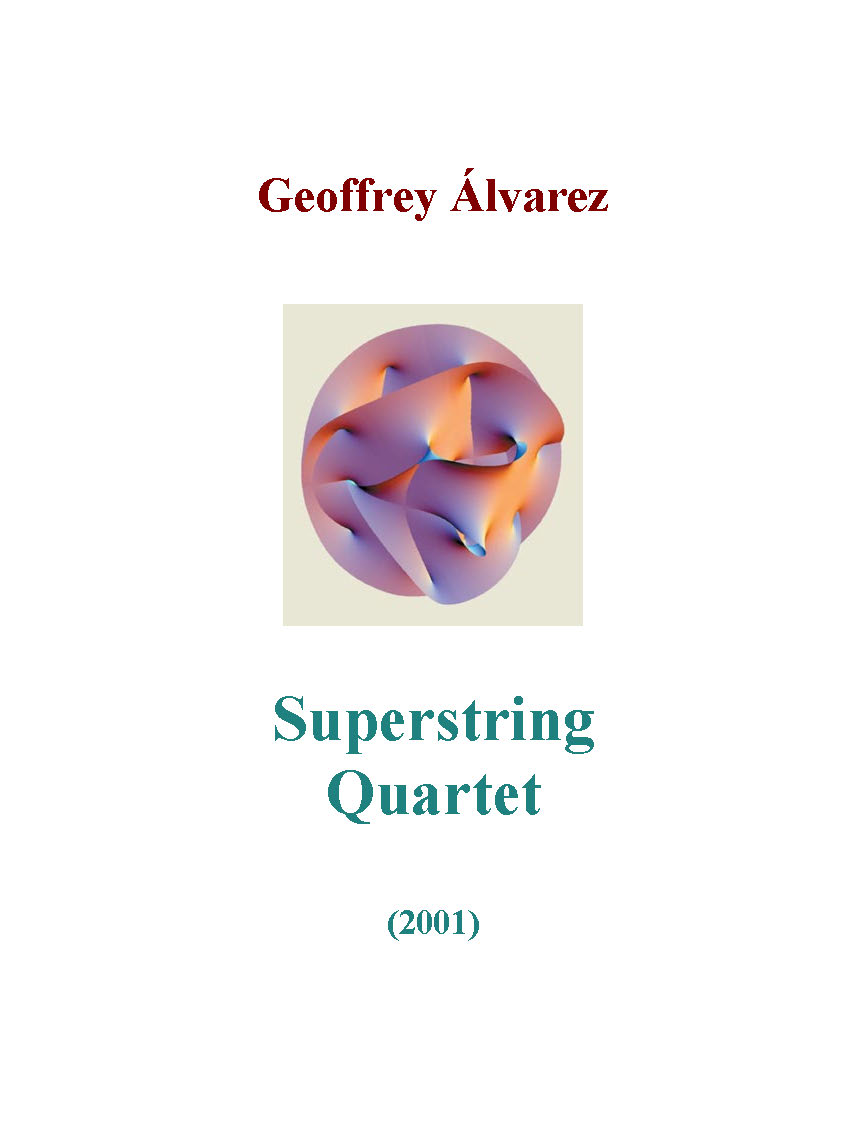
Superstring Quartet - Download Sheet Music PDF
file (scoreexchange.com)
Superstring Quartet
(youtube.com)
The Superstring Quartet explores musically some concepts within Superstring
Theory: bar 169, for instance, is a ten part canon expressed in only four
voices; an analogy of the the dimensions that superstrings oscillate in,
only four being observable, the others vibrating tightly curled in a six
dimensional Calabi-Yau manifold* (reproduced above).
Duration circa 8' 30"
The piece is dedicated to scientific consultant and musicologist Eila
Bannister.
*Professor Andrew Hanson’s visualisation of a Calabi-Yau manifold has been
reproduced with his permission. http://www.cs.indiana.edu/~hanson/
Fun-key
for piano duet
sample score
•
digital realisation
•
duration
7′ 23″ Lute El primer
olor
for
baritone and lute
peruse and purchase score
•
duration
circa 2′
Also in The Lute
Society of America Quarterly Volume XXXIII, 1998
Issue No.
4 A Plaine and Easy Introduction
to New Lute Musicke –
Parte One, by Betsy Small
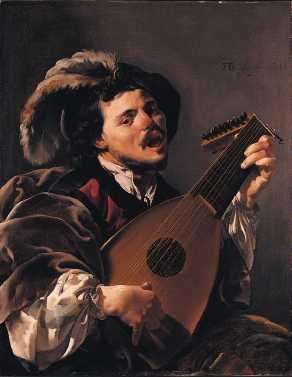
Teares and Lamentations
–
Six Sundry Sighs
for ten
course lute
sample score
•
duration
13′ 17″
Edition Published by the Lute Society ISBN 0 905655 32 X
Alisimon’s
Pursuit
Lady Luckett’s Lachrimae: a dolorous Dumpe
Doctor
Foster’s Fancy
Father
Fazackerley’s Pestilence
St.
Andrew’s Complainte
Mistress Gillie
Johnson’s Goodnight
Sith that dear Voice... Is
reft from Earth to tune those spheres above, What art thou now but a harbinger
of woe? Thy pleasing notes by pleasing notes no more, But Orphan wailings to
the fainting ear, Each stop a sigh, each sound draw forth a tear...
From To
His Lute’ by William Drummond of Hawthornden (1585-1649)
Illustration: Hendrick ter
Brugghen (1588 - 1629)
Lute player 1624
National Gallery,
London. No. 6347
KerbCrawling
ballet for ten
instruments
KerbCrawling.pdf (dropbox.com)
• duration 20′
Flute/Piccolo,
Oboe/Cor Anglais, Clarinet in A, Horn in F,
Pianoforte, 2
Violins, Viola, Violoncello, Double Bass.
Perfomances:
Anemone, York Festival, 1989
Nottingham University (1989)
Oxford University Sinfonia, (1998)
Obsessions
for
flute, viola and harp
•
details
susurritos sonrosados
for flutes, clarinets, soprano and percussion
•
details
Songs My Parrot
Taught Me:
a Carnival of Domestic Animals
soprano, alto, tenor, clarinet, violin, violoncello
and pianoforte
•
details
Horn Trio
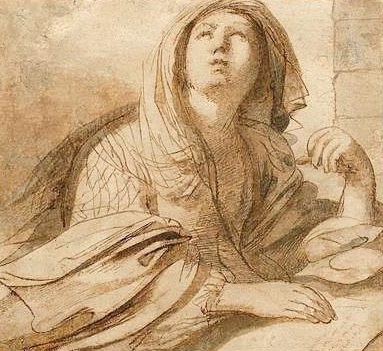
The Cimmerian Sybil
score • duration circa 20′
Painting of the
Cimmerian Sybil by Guercino (1591
-1666)
Beyond the Black
Sea
In the frozen
northern wastes
beyond the the Caucasus
Dwells the
Cimmerian Sibyl.
Apollo descends
to
receive the plentiful
blessings
from her cornucopia.
© Copyright Geoffrey
Alvarez in homage to Fainlight’s poem
‘The Cimmerian Sibyl’
(Hutchinson, 1980)
Bran’s Singing Head:
for soprano, clarinet and harp
•
details
Orchestral material available for hire or
purchase from
Geoffrey
Alvarez
Strings

sample score •
digital realisation
• duration 14′
13″
Quarternity - Download Sheet Music PDF file (scoreexchange.com)
The Camomile
Pillow
for cello ensemble
•
details
Sonata
for
violoncello and pianoforte
first performance 1985 by Susan
Hargreaves
–
violoncello,
Dominic Saunders
–
piano, University
of York.
sample score
•
digital realisation
•
duration 17′
19″
Wind
& Brass
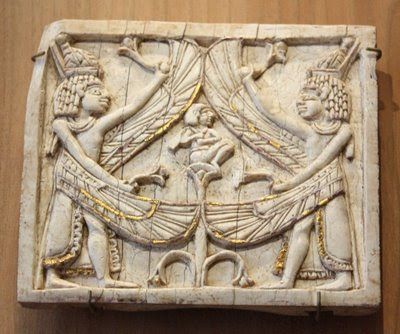
King Solomon’s
Monsters:
for two clarinets and bassoon
view and purchase •
duration 17′
19″
Spinning Night
for trombone and piano
peruse and purchase
•
duration
20′
Alan Tomlinson, trombone; Geoffrey Álvarez, piano
-
British Music Information Centre. March 25 1997
-
University of Oxford
Contemporary Music Society, 1998
-
British Trombone Society 13th Annual Festival,
November 15
1998
A virtuoso exploitation of the unique talents of trombonist Alan Tomlinson drawing on the symbolism of the longest night of the year: the
trombonist exorcises the dark spirits of the dying year by literally spinning to
ensure the world returns to the light.
Reed Bed
clarinet choir
•
details
The Travelling
Musicians
wind quintet •
details
The Laughing Lotus
wind quintet
•
details
Brass Etchings
for
brass quintet
•
details
Copyright works containing
accordion
or piano, clarinet and strings
The following two works were commissioned
by FILUM Musikschule for the Bundeswettbewerb Jugend musiziert, 2023. As a
result, they are not currently available for sale or performance outside of
the institution. However, permission has been obtained to program Tzimtzum
for a professional development course in Gipfel in the Autumn of 2024, so it
is possible that similar arrangements can be made for other occassions -
however anyone interested should initially contact Geoffrey Alvarez who will
in turn make an application to FILUM with any suggestion for events
scheduled before summer 2026. All sample videos are computer realisations of
unperformed earlier versions of the pieces due to similar restrictions.
Tzimtzum
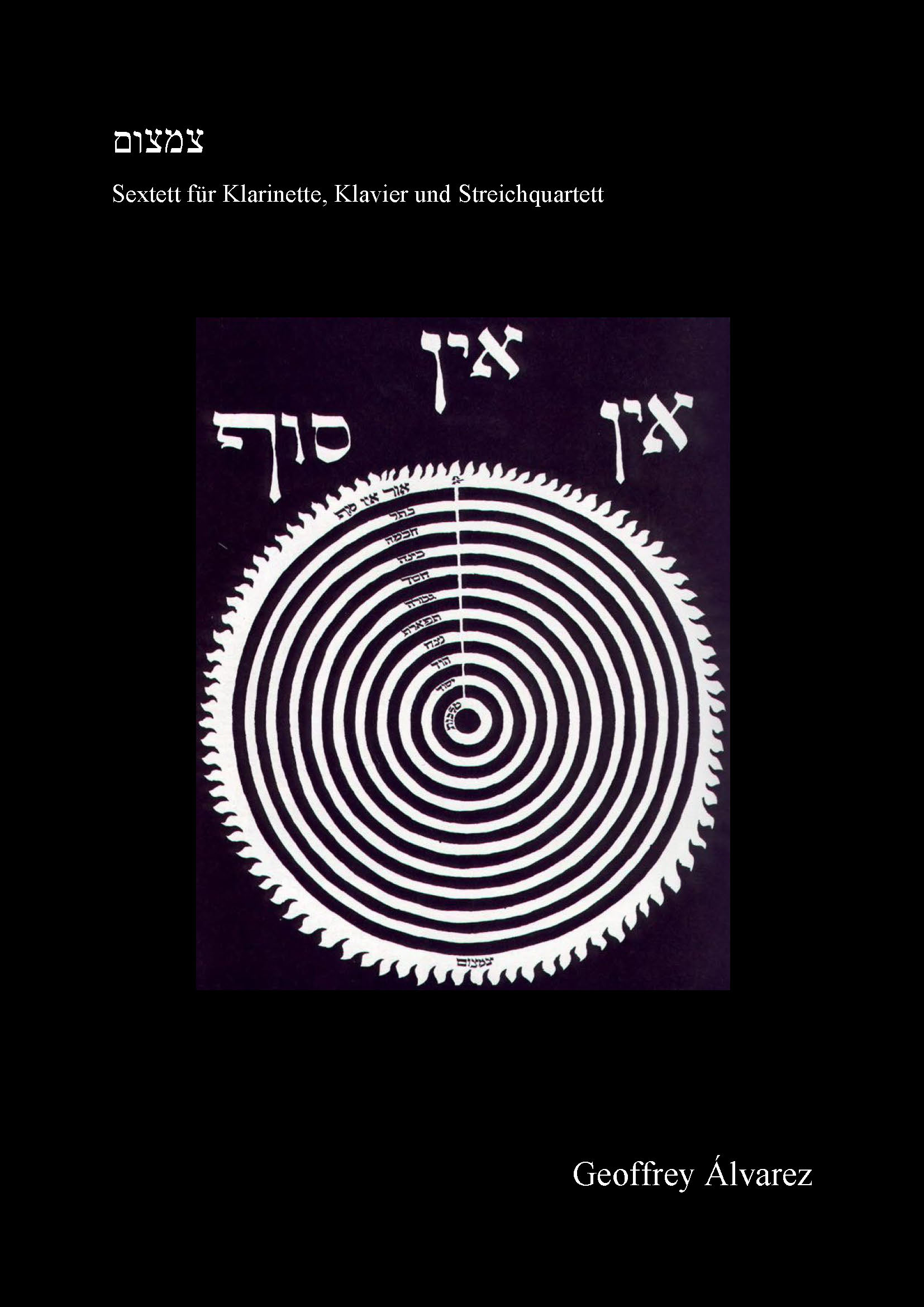
Tzimtzum entwickelt Material aus drei jüdischen Themen: Yedid Nephesh (Idelsohn, Abraham Z., Hebräisch-Orientalischer Melodienschatz Bd. X: Gesange der Chassidim (Leipzig: Friedrich Hofmeister, 1932) Nr. 363. Elu veelu modim (Idelsohn, Hebräisch-Orientalischer Melodienschatz Bd. IV: Gesange der Orientalischen Sefardim (Jerusalem - Berlin - Wien: Benjamin Harz Verlag, 1923) Nr. 179. und Rebbins nigun, ebd. Nr. 168. Der Titel ist dem kabblistischen Begriff für den Raum entnommen von G-tt zugewiesen, damit
die Schöpfung aus den Schriften stattfinden kann des palästinensischen
Neomystikers Isaac Luria. Sein Schüler Eleasar Azkari komponierte das
Gedicht, das durch die erste Melodie veredelt wird in
diesem Werk aus der
Transkription des Musikethnologen Abraham Z. Idelsohn in der oben genannten
Veröffentlichung Wie Idelsohn in Jewish Music: Its Historic Development
feststellt, (New York: Henry Holt and Company, 1929), S. 411: „Diese
Melodien [beziehen sich im vorliegenden Fall auf Yedid Nephesh] haben einen
Geschmack von Überirdischem - wie
ein wogender Nebel, der sich ins
Unendliche (en sof) verliert." Beauftragt von
die Musikschule der Stadt Filderstadt - FILUM
Tzimtzum (youtube.com)
Boum!
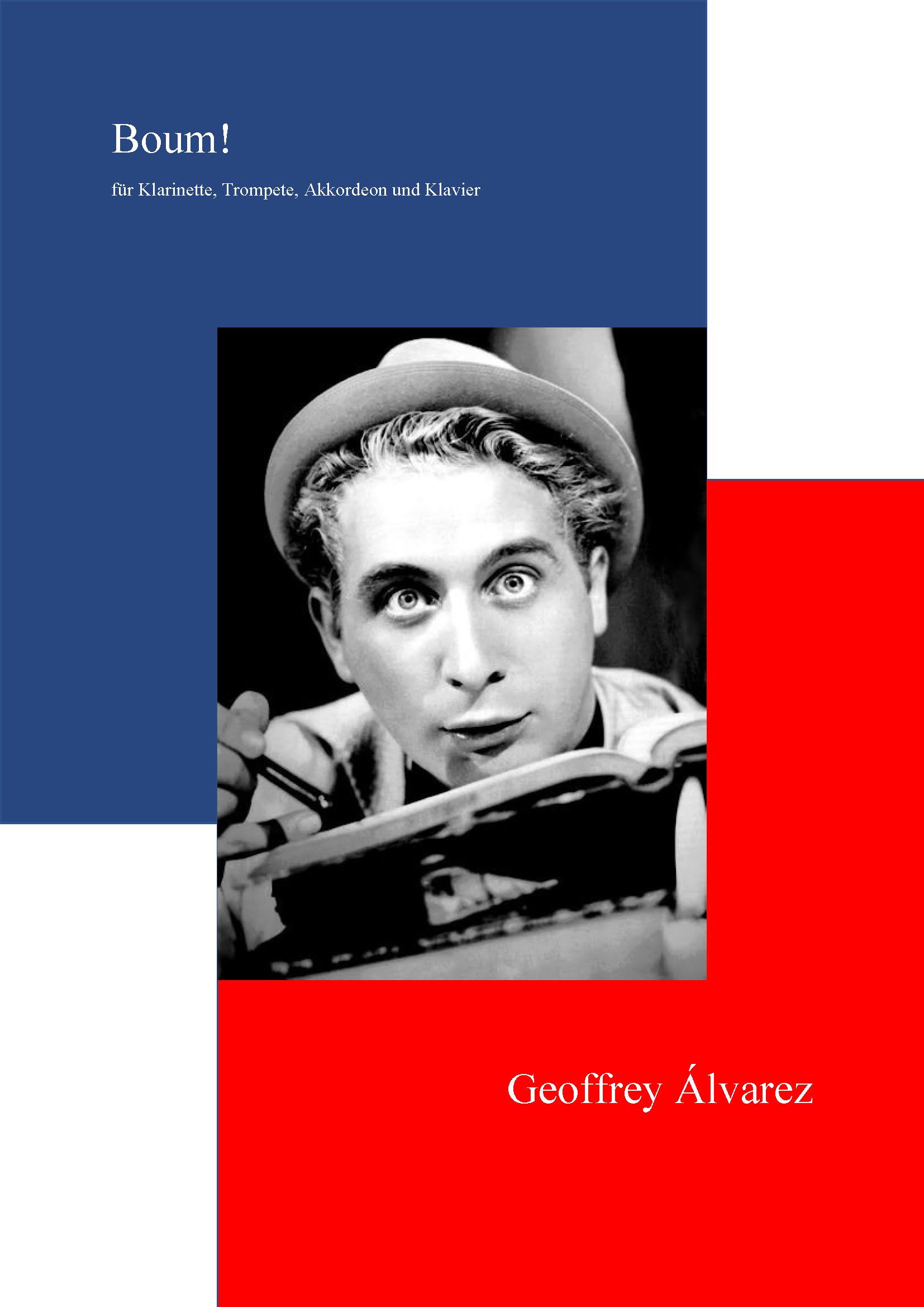
„Boum!“ geht auf verschiedene Weise mit diesem vergangenen Erbe um, von der
fast vollständigen Auslöschung der Geschichte zu Beginn des Werks bis zur
Akzeptanz am Ende. Mal werden die historischen Vorbilder harmonisch
verzerrt, wie beim Auftakt, mal wird die Phraseologie erweitert
(Probenbuchstabe E). Boum! ist eine Hommage an die letzten fünfhundert Jahre
traditioneller und populärer französischer Lieder und Tänze. Das Werk
beginnt mit einem Verweis auf Pierre Attaingnants Basse Dance La Magdelena
P.B. aus seinen „Dixhuit Basse Dances, 1529“ mit einer Anspielung auf
Monteverdi und endet mit einer Galliarde aus „La Garde“, einer 1571 von
Pierre Phalèse herausgegebenen Sammlung neuere Anspielungen auf der Chanson
Boum! von Charles Trenet aus dem Jahr 1938, das in der Mitte des Stücks
vorkommt, Fragmente auch an anderer Stelle häufig vorkommen, gesehen mit den
Augen von Monteverdi oder Vivaldi. Zwei traditionelle Volkslieder, ein
Vogelhochzeitslied Lou Coucu e l' Hirondelo und ein Wiegenlied Le chat à
Jeanette werden unterschiedlichen Transformationen unterzogen, wobei
ersteres mit einer russischen Wendung versehen wurde, die auf Strawinskys
eigene Hochzeitsmusik Les Noces anspielt, und die beiden gleichtaktigen
Rhythmen des letzteren nun zu einem Dreiertakt werden, um den Schwung zu
betonen einschläfernde Wirkung des Wiegenlieds, die durch eine belebende
Behandlung der Galliarde kontrastiert wird, die mit einem
Klarinetten-Diskont bekränzt ist, in dem der Jazz-Klarinettist Benny Goodman
hereinplatzt Französisches Gericht. Diese Studienpartitur enthält die
vollständige Notation der Akkorde in der linken Hand der Akkordeonstimme
nach dem Stradella-System.
Boum (youtube.com)
You Lan
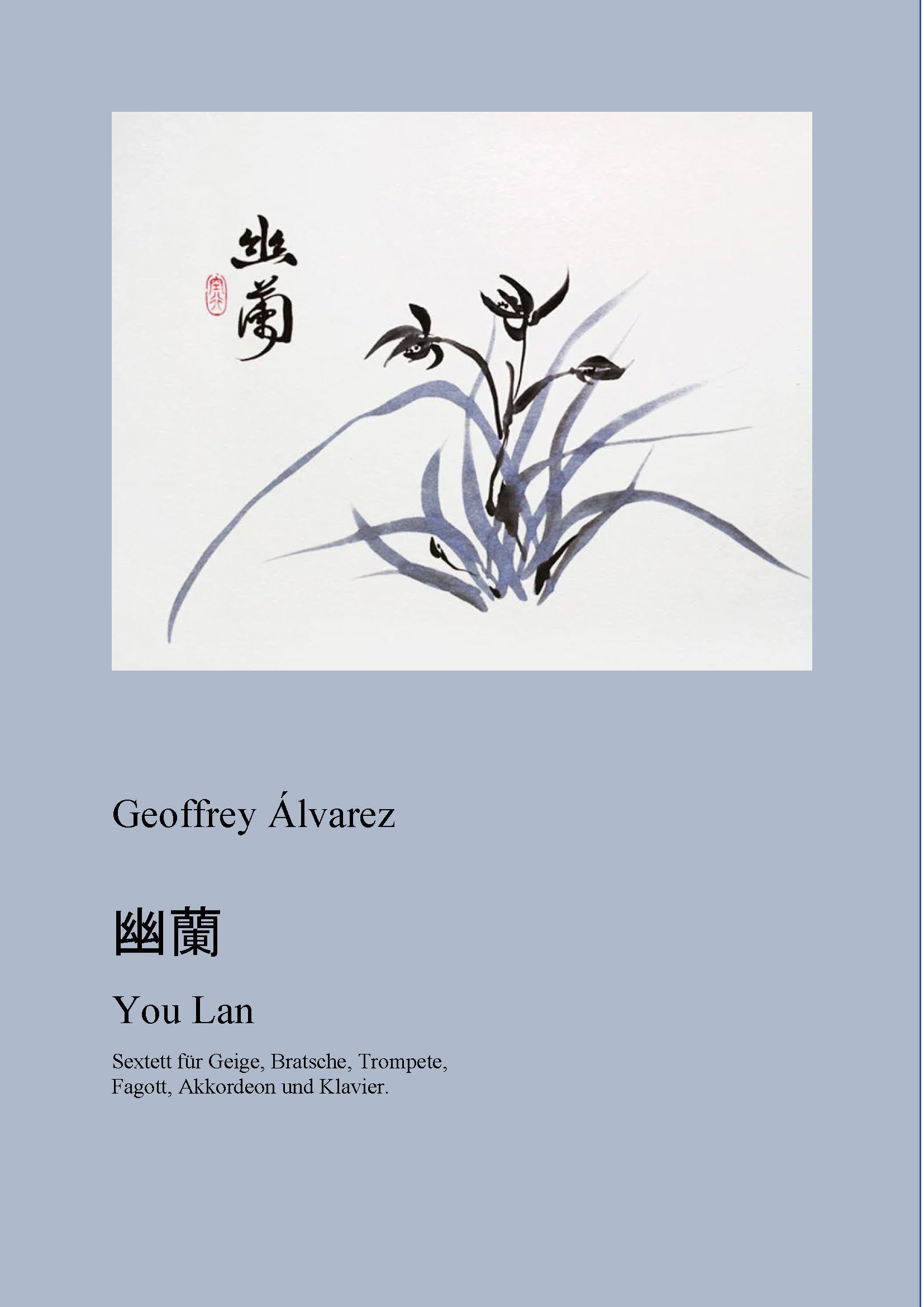
,You Lan‘ - die
‚Solitary Orchid‘ des Titels dieses Stücks wird durch die Gegenüberstellung
zweier alter chinesischer Meditationsmelodien
symbolisiert: 碣石調幽蘭: ‚A
Solitary Orchid in the Stone Mode‘ für古琴
guqin, die chinesische Zither, und ‚Elegant Music‘ für die
chinesische Mundharmonika Sheng, ersteres Werk, das erste
notierte Stück fernöstlicher Musik aus dem 6.
Jahrhundert, letzteres aus einer ähnlichen antiken Epoche
Der meditative Charakter dieser Themen steht im Kontrast zu
dem lebhaften ,Aufhängen der roten Laterne' aus der
Provinz Shangdong: Die Orchidee ist allein, während
die eujahrsfeierlichkeiten um sie herum stattfinden.
Das Sheng wird im Chinesischen mit zwei übereinander
liegenden Schriftzeichen angezeigt –
笙 das oberste bedeutet „Bambus“
und das untere bedeutet „Leben“ – geeignet, um der
Orchidee, die von der Guqin gespielt wird, Existenz zu verleihen. Für das vorliegende Werk wurde das Sheng durch das
Akkordeon ersetzt, das selbst ein Nachkomme des edlen
chinesischen
Vorfahren ist, das 1777 von dem Jesuiten Joseph Marie Amiot
in Wien
eingeführt wurde. Die chromatische Stimmung des modernen
Akkordeonsermöglicht die Tonleiter des Sheng , das auf D basiert, um
einen Ton auf C
abgesenkt werden, um mit der Tonalität der Sheng-Melodie
zu harmonieren: C D E Fis G A B H Beauftragt von die Musikschule der
Stadt Filderstadt -
FILUM.
Youlan (youtube.com)
home





















